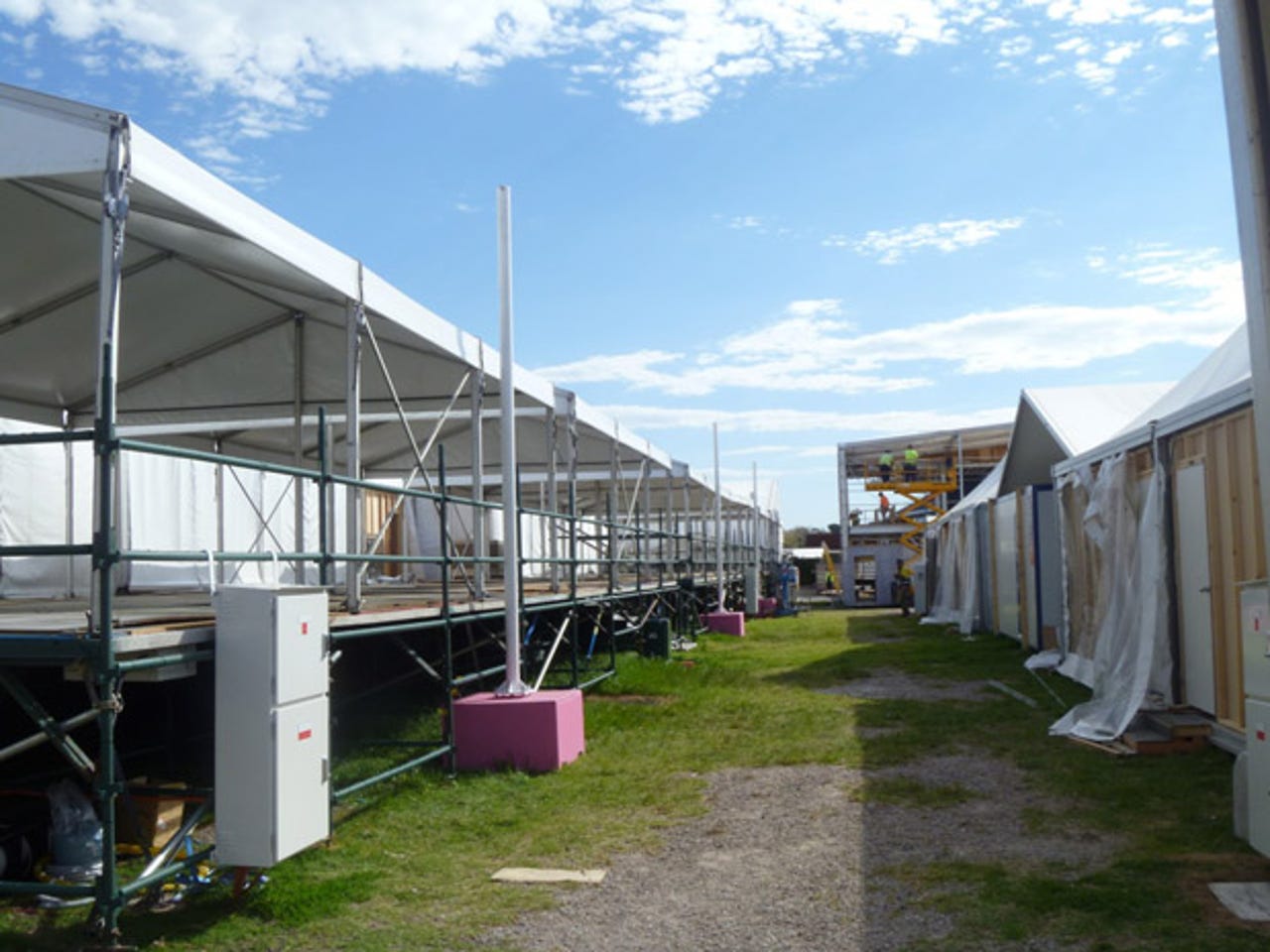Telstra's racecourse small-cell rollout: photos


Telstra, along with network vendor giant Alcatel-Lucent, is trialling seven lightRadio Metro Cells based around Flemington Racecourse in Melbourne. They are designed to improve mobile capacity by up to 80 percent to cope with the large volume of punters visiting during the Melbourne Spring Racing Carnival.
The cells are installed in the "Birdcage" VIP area of the racecourse, and are spaced out every 10 metres. The technology by Alcatel-Lucent can support both 3G and long-term evolution (LTE) 4G services, and Alcatel-Lucent is conducting more than 20 trials of the technology across the globe. It has 39 commercial deployment agreements in place.
(Credit: Alcatel-Lucent)
"The small-cell technology we have deployed in the Birdcage are mini base stations that complement the two dedicated wide-area base stations we have permanently serving Flemington Racecourse," Telstra's executive director of networks Mike Wright said.
(Credit: Alcatel-Lucent)
Telstra and Alcatel-Lucent estimated that the total capacity available in the Birdcage area will be effectively doubled for the duration of the trial.
"Spaced approximately every 10 metres across the venue, we're getting closer to our customers to carry their data. Small cells such as these should provide an effective boost to the network," Wright said.
(Credit: Alcatel-Lucent)
Wright said that Telstra has limited the trial to the Birdcage while it is testing the technology.
"As with any new technology, we want to assess how this new technology integrates into our network, and see what difference it makes to keep our customers connected."
(Credit: Alcatel-Lucent)
The seven poles are powered by a single power and aggregation unit.
(Credit: Alcatel-Lucent)
Wright said that after the trial has been completed, Telstra will assess whether it will use Metro Cell deployments for other big sporting or public events to improve capacity issues.
Alcatel-Lucent's Australian president Sean O'Halloran said that the technology is something that many operators across the globe are looking at using to deal with capacity issues in mobile networks.
"This deployment and live trial with Telstra demonstrates a smart network approach, integrating small cells into the macro network to increase capacity and customer experience in high-traffic areas. It's an approach we're going to see a lot more of as operators invest to meet demand."